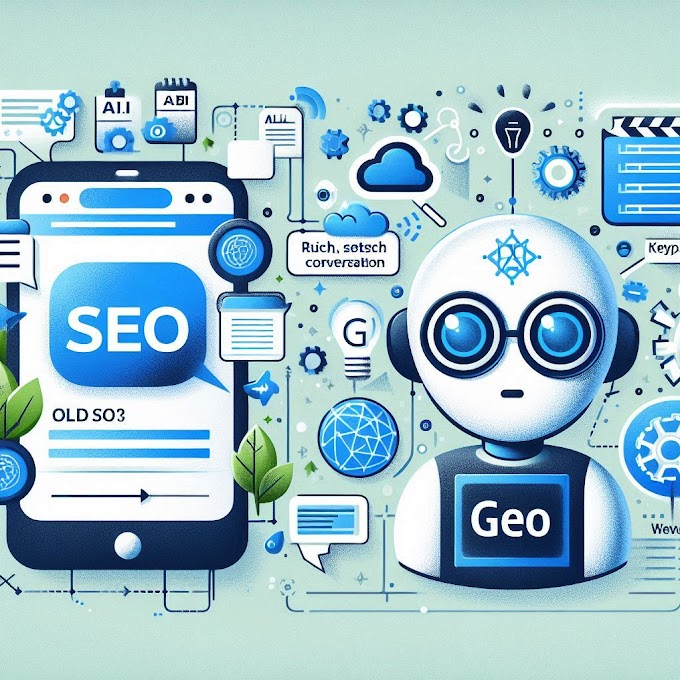In the world of digital content, there’s a new game-changer
on the block—Generative Engine Optimization (GEO). As AI-driven tools
like ChatGPT, Gemini, Bing Copilot, and DeepSeek AI transform how users search
for and consume information, the way we create content also needs to evolve.
GEO is a fresh approach to content strategy built specifically for these AI-powered
platforms.
Unlike traditional SEO, which focuses on ranking high in
search engine results through keywords and backlinks, GEO aims to make your
content the preferred choice for AI to retrieve, summarize, and present
in answers. It’s about speaking the language of large language models
(LLMs)—which means writing clearly, covering topics thoroughly, and offering
trustworthy, well-structured information.
Let’s explore how GEO works, how to optimize for it, and why
it’s the future of content visibility in the age of generative AI.
Understanding Generative Engine Optimization (GEO)
At its core, Generative Engine Optimization (GEO) is
about tailoring content so that it ranks not just on search engine result pages
(SERPs), but within AI-generated answers. These AI tools don’t scan for
keywords the way Google does. Instead, they evaluate how well your content
answers a user’s query in a clear, useful, and natural tone.
Here’s what makes GEO different:
- Natural
Language Focus: AI looks for content that reads like human
conversation.
- Contextual
Relevance: It doesn’t just match words; it matches intent.
- Structured
Clarity: Clear headings, bullet points, and well-organized content
make it easier for LLMs to understand.
- Depth
and Accuracy: Shallow content gets ignored; detailed, fact-based
content wins.
How to Rank Your Website on Generative Search Engines
To appear in generative AI answers, your content must be designed
for discoverability by language models. Here's how you can optimize your
site for GEO:
1. Write Like You’re Answering a Question
Start with intent. What question is the user trying to get
answered? Structure your content like a helpful response—clear, direct, and
comprehensive.
2. Use Conversational, Easy-to-Read Language
AI models favor content that mimics how people speak. Ditch
complex sentences and avoid jargon. Aim for clarity and simplicity.
3. Add FAQs and Q&A Sections
FAQ formats are naturally aligned with how people ask
questions. They’re also great for helping AI identify your content as a source
for specific queries.
4. Structure Matters
Use headers (H2, H3), bullet points, and short paragraphs.
This helps LLMs "understand" the layout and pull out relevant pieces
more easily.
5. Enrich Content with Context
Don’t just repeat keywords—explain the topic deeply. Offer
examples, comparisons, pros and cons, or step-by-step instructions.
6. Use Schema Markup
Structured data still matters. Adding FAQ, How-To, and
Article schema can help AI platforms recognize the intent and context of your
content.
7. Build Authority
Cite reputable sources, link internally to related articles,
and keep your information accurate and up to date. AI prefers content it can
“trust.”
Ranking Parameters for Generative Search Engines Like ChatGPT, DeepSeek AI,
and Others
Generative engines like ChatGPT and DeepSeek AI don’t work
like traditional search engines. While things like keywords and backlinks still
matter a little, what really counts is how well your content answers the user’s
question—clearly, directly, and with real value. These AI tools look for
content that is easy to read, deeply informative, and organized in a way that
makes it simple to understand. They also prefer trustworthy sources, updated
information, and content that people actually engage with. So instead of aiming
for a top spot on a search results page, your new goal is to be the answer that
the AI engine selects and presents to the user—right when they need it.
Why GEO Is the Future of Content Visibility
Search is changing. Users are increasingly turning to
conversational AI platforms for answers instead of scrolling through multiple
search results. That means brands that fail to adapt will lose visibility—even
if they dominate traditional search rankings.
Generative Engine Optimization is no longer optional. It’s
the next step for businesses, bloggers, and marketers who want to stay relevant
in the era of AI search.
Final Thoughts
If you want to be seen, you need to be understood—not just
by humans, but by the AI that’s guiding their online experiences. Generative
Engine Optimization (GEO) isn’t about hacking the system; it’s about
helping the system help users. When your content is clear, informative, and
well-structured, it becomes the answer people (and AI) are looking for.
Start writing for the future of search today. GEO is
here—and the sooner you embrace it, the better your chances of becoming a
trusted voice in an AI-first world.
















0 Comments